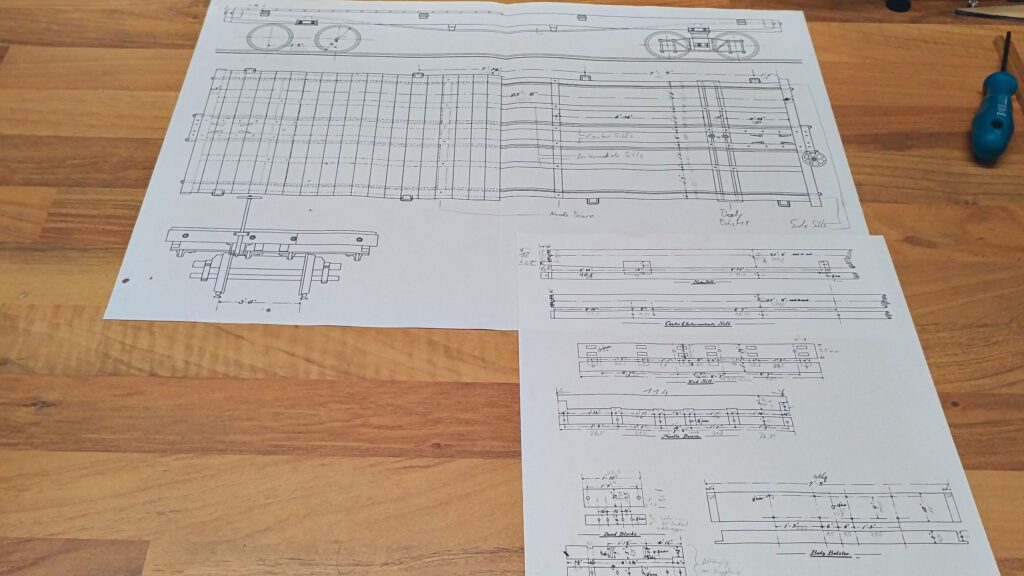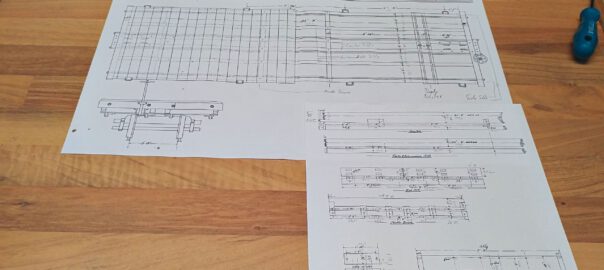For our next operation session I’d like to contribute a few waggons of my own. In that way I will stick to my intentions, that is to focus on a complete train for the time being.
One better starts small. That’s why I’ve picked the construction of freight waggons, precisely: flatcars. The reasons are natural: most US freight waggons based on flatcars or were closely related to them. Furthermore they make the easiest waggons to model, apart from disconnects and skeletons.
First order of the day is research: How were flatcars constructed? Which dimensions and particulars come into play? How are they built as models? The web offers a host of construction reports on waggons and flatcars, you can even find some for my Fn3 scale.
After some looking around, I zeroed in a model of a prototypical length of 26′. The Old Machinist published drawings on pixorails, the image file has such a high resolution that one can print it for almost any scale. Courtesy to Union Pacific Historical Society I’ve got the permission to construct my model based on those diagrams.

On the web site made by Bernhard Schröter, US-Models of 1900, there are several construction reports on building flatcars and gondolas. Those are constructed in H0, but with such a perfection that one can learn a lot of hint and tricks that still apply for greater scales. Many thanks for those reports, they do help a lot when one is beginning and making the first own steps!
And of course, there’s still Gerd’s Waldbahner-Blog, where he relates how he constructs and continually improves his flatcars built for 5′ railways. There, one can find invaluable hints that really ease the way and avoid a lot of frustation.
As soon as the drawings and construction techniques were fixed, acquisition is called for. I like to use red cedar wood because it’s naturally weather-resiliant. One should never use plywood because even with good coating and painting it will swell in high humidity. Models made from plywood are endangered in the garden by every fog and shower. That’s not for me!
To begin with I’d like to build a working model fast and invest on detailing later. So, besides the necesarry wheelsets made from steel and knuckle couplers produced by Accucraft, I’ve purchased several archbar-bogies made from plastic by Piko. Of course I’d like to try my sratch-built bogies, but that will have to wait a bit.
What proved a lot more difficult was the acquisition of metal. I own quite a stash of brass: Sheets, pipes, squared and round rods and profiles in several thicknesses and I will use those to build all the fittings that I can manage. The trusses, however…
I downright despaired to find brass wire with a diameter of 1.6 mm. Why 1.6? Because on the one hand I couldn’t find metric threading dies in M1.5 and on the other hand this diameter neatly fits the prototypical struts of the trusses. After spending days trying to find brass wire, I finally struck gold: pasture fences! One can purchase hundreds of metres of smooth steel wire in 1.6 mm diametre at very affordable prices. I’m now equipped to build threaded rods and fittings for years to come!
Next week, construction is up.

